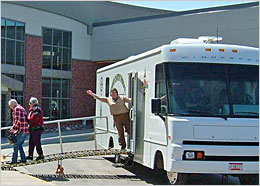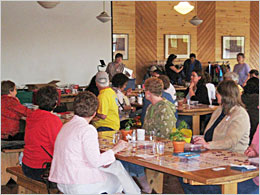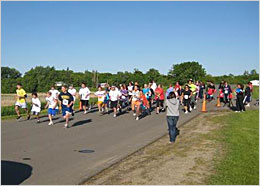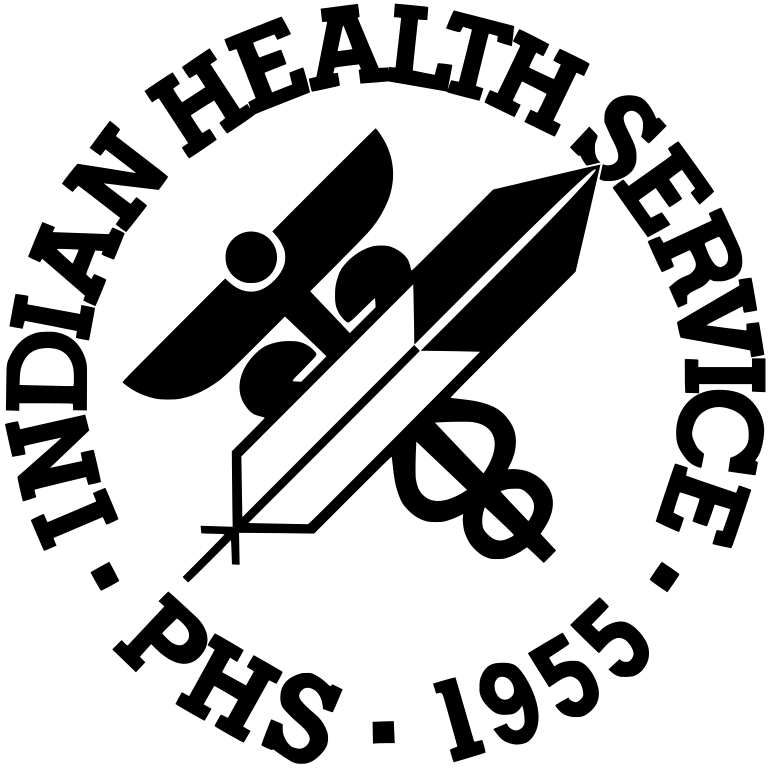White Earth's Diabetes Program Secrets Revealed: Health Bingo, Podiatry Clinic on Wheels and Kindness

White Earth Podiatry Clinic on Wheels.
The White Earth Reservation is the largest in the state of Minnesota, encompassing over 1,000 square miles and serving about 11,000 people through its IHS health clinic. When its diabetes program first received SDPI Community Directed Program funding in 1999, staff could not envision where they would be in 13 years. At the time there was only one small fitness center serving the entire tribe and no podiatrist. Today the program has implemented numerous activities to support its Physical Activity and Foot Care Best Practices. "We have an excellent diabetes prevention and management program. We are on track," said LaRaye Anderson, Diabetes Program Coordinator.
There are diabetes fitness centers offering free personal training at four of the tribe's villages. Clients can work out with trainers or participate in group classes of Zumba® fitness, kick boxing, kettlebell, pole walking, step aerobics and boot camp fitness. Several 5K run/walks and regular blood sugar, A1C, blood pressure and kidney screenings are offered each year. Diabetes program staff collaborate with other programs to offer healthy snacks and schedule the 5K run/walks at the same time as community gatherings like powwows.

Healthy Living Bingo session.
Healthy Living Bingo is held monthly in each village. About 40 adults and children attend each month and learn how to prevent diabetes – how to attain healthy blood pressure, cholesterol and blood sugar numbers, how to eat healthy using My Plate and the importance of regular physical activity. Diabetes Bingo, which focuses on preventing diabetes complications, is also held monthly in each village. About 25 people attend and learn how to prevent diabetes complications by managing their blood sugars, taking medications as prescribed and keeping medical appointments.
In fitness centers and community gathering rooms, brightly colored posters of Aimee Smith, a young White Earth fancy shawl dancer, decorate the walls. Diabetes program staff developed the poster with the words "White Earth Dancing to Defeat Diabetes." Staff also developed a logo featuring a cyclist, a runner and a traditional dancer accompanying the phrase "Exercise is medicine."

White Earth Diabetes Program member lifting weights.
A podiatry surgeon travels to villages in a mobile clinic giving foot checks and handing out breathable socks, orthotics and special shoes, a direct result of the tribe's diabetes program implementing the Foot Care Best Practice. "We were concerned with the lack of a podiatrist and the high number of amputations, so we chose the Foot Care Best Practice to address this," said LaRaye. "In the ten years since the tribe has contracted with the podiatry surgeon, amputations have decreased and awareness has increased on the importance of preventing ulcers and maintaining good foot care."
Diabetes staff evaluates activities by gathering assessments and evaluations. GPRA (Government Performance Results Act) numbers and diabetes audit information allow staff to assess the program's impact. On one fitness program evaluation form, a client wrote what she accomplished after only two months: "I can put on my own socks and shoes. I can fasten my seat belt. I have been able to stop taking two medications, saving me $170 each month!"
Another client reported: "In one year, I lost 150 pounds! I am walking without my walker and started gardening again. I feel responsible for my health and have faith in myself."

White Earth Diabetes Program members participating in a 5K walk.
Many clients have commented that the professional, helpful staff is key to learning about diabetes prevention and management. "They are kind to all who walk through the fitness center doors," said a client.
Although many community members have lost weight, obesity and overweight continue to be a challenge at White Earth. "We are building on what we have learned," says LaRaye. "It takes empathetic, professional and energetic staff, which we have. And it takes time, so we are working now with our sights on future goals. The obesity and overweight numbers are challenges that face everyone in the United States. I feel we are on the right path in educating our people and offering opportunities to participate in fitness no matter what a person's fitness level or interests are."


